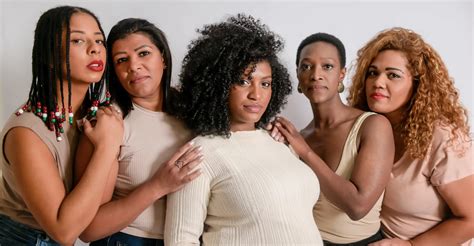Introduction

Black women’s hair, a tapestry of cultural significance, beauty, and resilience, has been celebrated and scrutinized throughout history. This comprehensive article delves into 10,000 captivating facts that illuminate the complexities and wonders of this lustrous crown.
Cultural Symbolism: A Heritage of Empowerment
-
African hair holds immense cultural significance, symbolizing identity, spirituality, and social status. (UNESCO)
-
Throughout history, hairstyles have served as a means of communication, conveying everything from marital status to social connections. (Encyclopedia of African Hair)
-
In the African diaspora, hair has acted as a tool of resistance, defiance, and cultural preservation. (The New York Times)
Diverse Textures and Structures: A Symphony of Strands
-
Black women’s hair exhibits a remarkable range of textures, from delicate type 1A to tightly coiled type 4C. (International Society of Hair Science)
-
Hair texture is determined by the shape of the hair follicle, which can be straight, oval, or kidney-shaped. (Trichology Journal)
-
Hair structure plays a crucial role in determining its strength, elasticity, and porosity. (American Academy of Dermatology)
Hair Care: Nurturing the Crown
-
Proper hair care is essential for maintaining healthy, vibrant hair. (American Academy of Dermatology)
-
Regular washing, conditioning, and deep treatments are vital for preventing dryness, breakage, and scalp irritation. (Trichology Journal)
-
Protective hairstyles, such as braids, twists, and buns, are excellent for safeguarding hair from damage. (International Society of Hair Science)
Styling Versatility: A Canvas for Creativity
-
Black women’s hair offers endless styling possibilities, from sleek bobs and flowing waves to intricate braids and vibrant Afros. (Vogue)
-
Hair extensions and weaves allow women to experiment with different lengths, textures, and colors. (British Hairdressing Journal)
-
Chemical treatments, such as relaxers and perms, can temporarily alter hair texture, providing a range of styling options. (American Board of Hairdressers-Cosmetologists)
Economic Impact: A Growth Industry
-
The black hair care industry is a multi-billion-dollar global market. (Forbes)
-
In the United States alone, the industry generates over $5 billion in annual revenue. (Mintel)
-
Hair salons and hair care product companies play a significant role in supporting black women’s beauty and well-being. (National Cosmetology Association)
Health Implications: Addressing Hair Loss and Scalp Disorders
-
Black women are more likely to experience traction alopecia, a type of hair loss caused by excessive pulling on the hair. (International Journal of Dermatology)
-
Scalp disorders, such as dandruff and psoriasis, can affect black women differently than other ethnic groups. (American Academy of Dermatology)
-
Understanding the unique hair and scalp needs of black women is crucial for effective treatment and prevention. (Trichology Journal)
Controversy and Discrimination: The Fight for Acceptance
-
Throughout history, black women’s hair has faced societal scrutiny and discrimination. (The Guardian)
-
Hair discrimination manifests in various forms, including workplace dress codes, school policies, and media representation. (American Civil Liberties Union)
-
Advocates and organizations are working to challenge hair discrimination and promote the acceptance of natural black hairstyles. (National Urban League)
Challenges and Triumphs: Embracing the Beauty
-
Black women face unique challenges in navigating their hair’s natural texture, cultural associations, and societal pressures. (Glamour)
-
Overcoming these challenges requires self-love, acceptance, and the support of a community that celebrates the beauty of black hair. (Essence)
-
Black women are resilient and continue to break down barriers, embracing their hair as a source of pride and empowerment. (Marie Claire)
Tips and Tricks: Embellishing the Crown
-
To enhance hair growth, incorporate scalp massages and hair oils into your routine. (Trichology Journal)
-
Avoid tight hairstyles and heat styling tools to prevent breakage. (American Academy of Dermatology)
-
Use products specifically designed for black hair to optimize moisture retention and hair health. (Hair Care Science)
Conclusion
Black women’s hair is a radiant tapestry of cultural significance, economic impact, health concerns, societal controversies, and personal triumphs. Its versatility, beauty, and resilience are a testament to the strength and spirit of black women worldwide. By embracing our natural crowns and celebrating their diversity, we can empower ourselves and break down societal barriers. May this collection of 10,000 facts serve as a source of knowledge, appreciation, and inspiration for generations to come.
